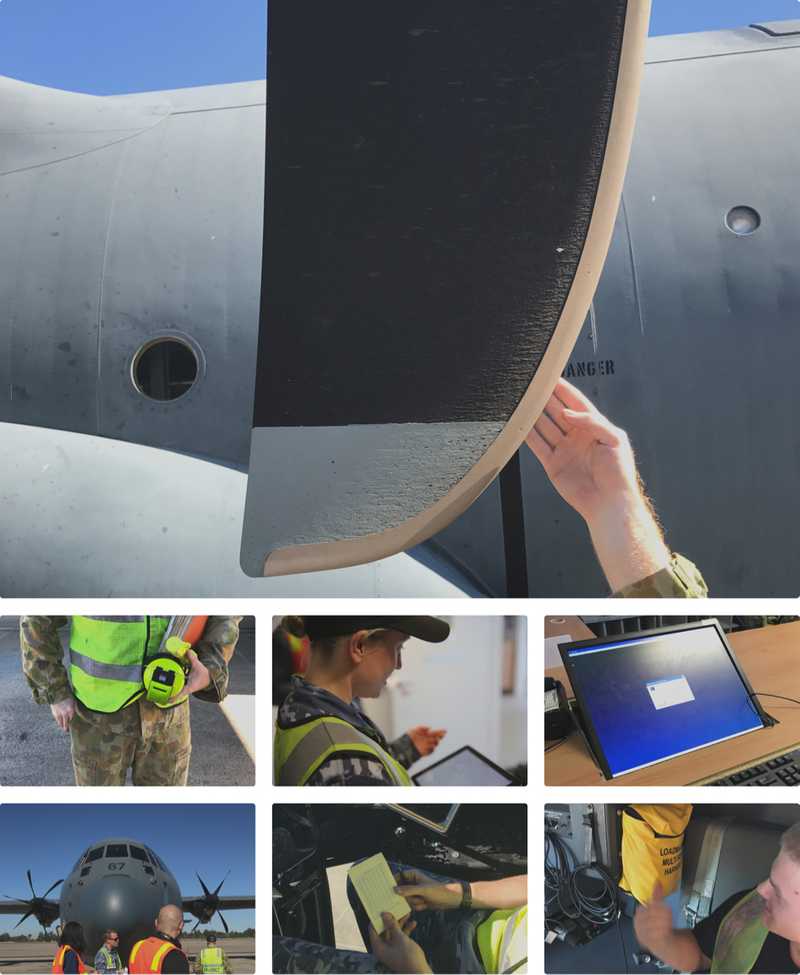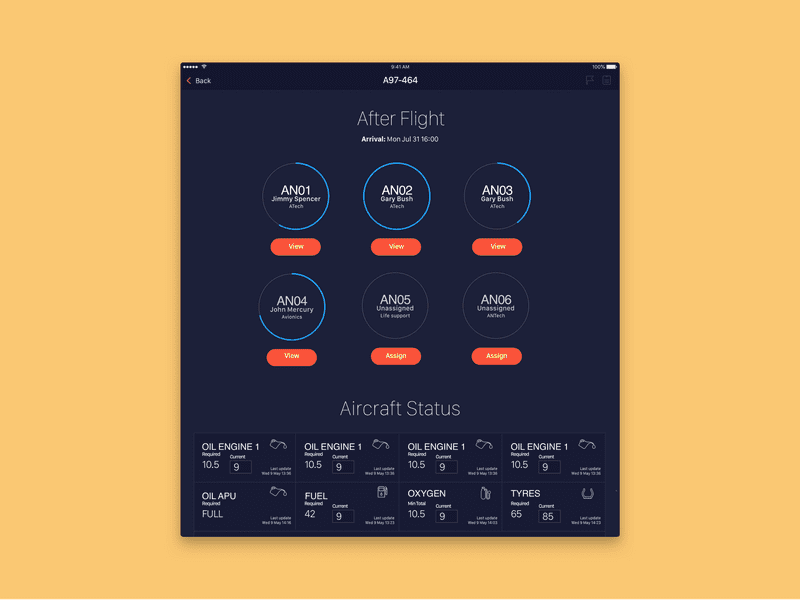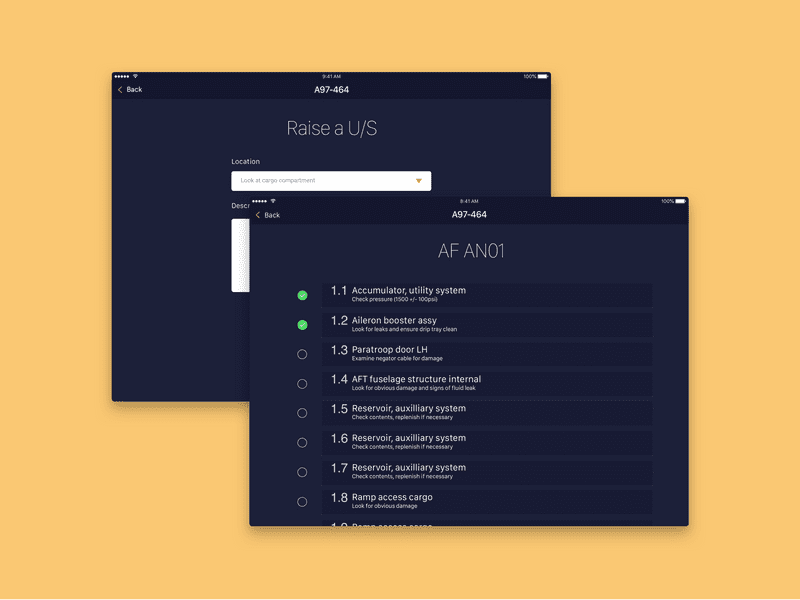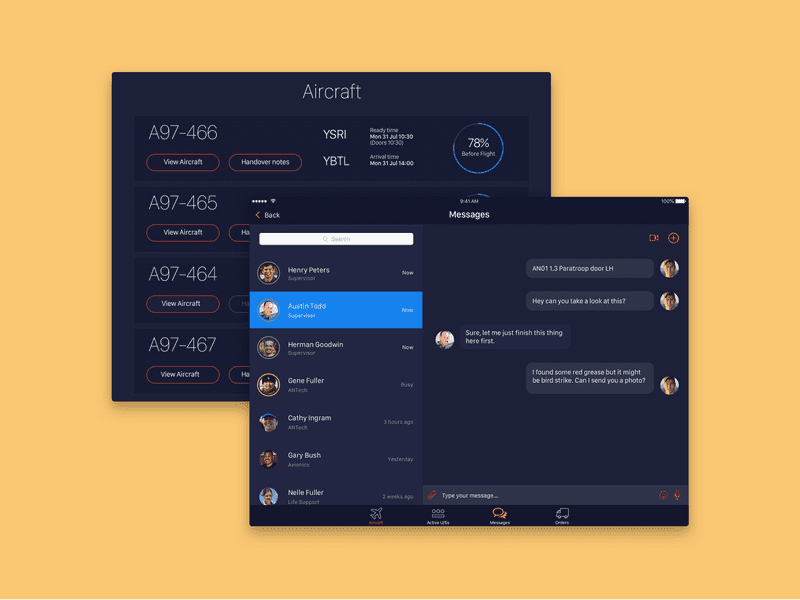Improving aircraft maintenance for technicians
How can a mobility solution for technicians improve aircraft maintenance?
Defence were using a maintenance management system that had been built more than a decade ago. Developed by Accenture the system could only be used on desktop. The challenge: Technicians today are accustomed to consumer products, and have the same expectations for the tools they use at work.
I was an Interaction/Service Designer on this project. We partnered with a squadron to identify design opportunities in the flight servicing process, and create a mobile product proof-of-concept. I partnered with a business designer, to own the research piece. I also gathered and integrated feedback from technicians to design the flows in the app.
Problems with the current process
Listening to personnel on the ground
Defence stakeholders told us they wanted review the current flight line maintenance processes to address a growing list of issues, including personnel frustration and tools that were outdated. For the organisation, a mobile solution would enable them to have an optimised workforce.
The tools need to work for the end users. We conducted user research with the squadron. What we heard from personnel helped us uncover some of the deeper needs, and pain points that technicians have.

Manual task management
The flying program is changing throughout the day. As a result, technicians were finding it difficult to track their task changes. This is a problem from a operational perspective—not being aware of schedule changes can mean the wrong aircraft is serviced.
Lack of comms
Personnel need to communicate with their supervisors and teams to get work done. From requesting support to communicating across different sections, very little is possible without talking to someone in-person. This leads to a lot of time wasted. Work is duplicated or dealyed. This problem only gets worse when personnel are away from their home base.
Unwieldy tools
Technicians have to deal with tools that are limited in functionality. Because existing systems are a challenge to use, the technicians often use workarounds.
Solutions in the proof-of-concept
Information that simplifies the maintenance job

The flight servicing app introduces a new way to view the aircraft taskboard, which was only available via a tv screen in the hangar. We are taking a the critical information technicians need and consolidating them into a small set of features (“Taskboard, Aircraft dashboard, Flight Servicing Checklist, Messages”).
This means the number of manual processes our users have to make when they perform flight servicing is reduced significantly, which helps them do other things, like training new personnel.
Digitisation of flight servicing checklist

The checklist combines inspection steps with an issue flagging feature. This means its not a chore to write up a defect tickets or to track down which aircraft part a ticket relates to. A simple toggle allows users to see the issue related to the flight servicing step.
Digitising the checklist also means technicians no longer have to carry a bulky book with them, and can refer to the technical manuals all on the same device.
A simple communication tool

We are providing a messaging feature that makes getting support from supervisors easier. Technicians can see who’s available or is active and get help to resolve any issues on the spot, rather than delaying the task or doing the job with incomplete information.
Laying out a service vision
After testing a prototype with personnel at the airforce base, we made some adjustments to the solution. Along with the prototype, we also delivered a future service journey to demonstrate the ideal future experience for flight servicing.
Conclusion
At the time, Defence were ready to use the proof-of-concept as the basis for a pilot program. The idea was to extend and evolve the tool for different Defence units, from army to navy. The project has set a new foundation for Defence to adopt an approach that considers personnel needs.